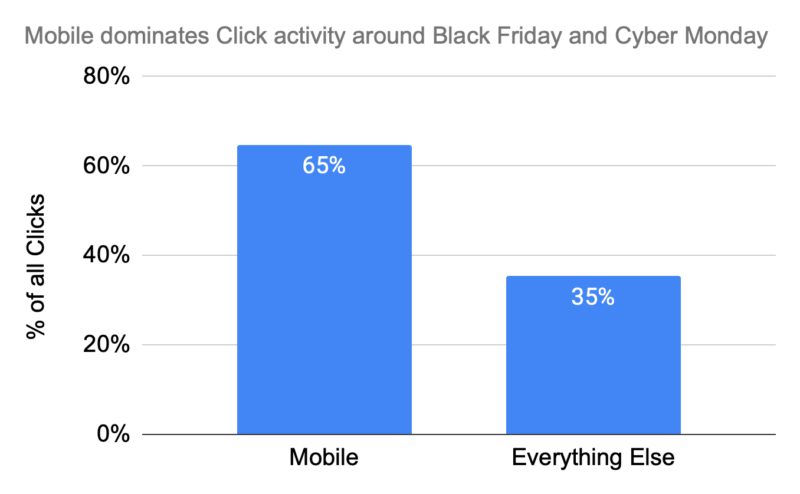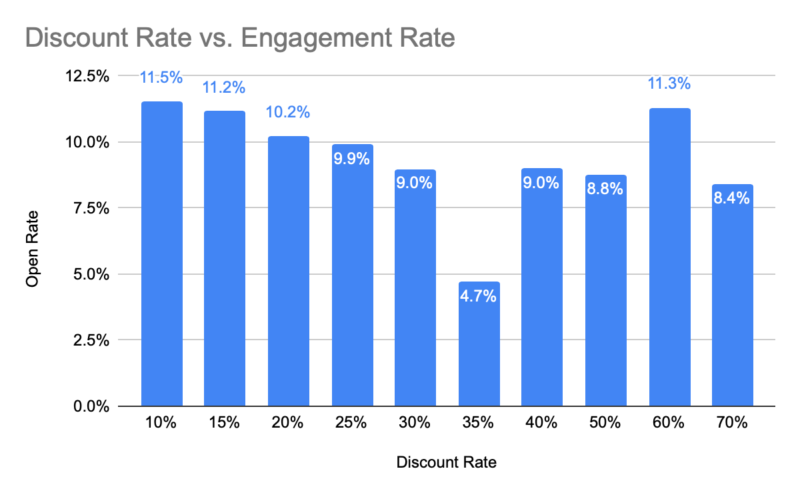Lessons from 2019’s holiday email sending (hint: mobile dominated)
Messages that are custom to a specific user’s wants and needs are the ones that resonate, especially when based on behavioral signals.
We’re a month into 2020 so what better time than to look back at the holiday shopping seasons of 2019 to inform our strategy over the course of the next 11 months. This year, like any other, some email marketing practices won the clicks of millions of holiday shoppers, while others drove users away. But the good news is that every holiday season is an opportunity for marketers to experiment and learn – and capitalize on the opportunity to engage with new and existing customers.
Here are a few trends gleaned from the Twilio SendGrid (my employer) 2019 holiday sending data and lessons to keep in mind as the next holiday shopping season looms on the horizon.
Embracing the mobile-first mentality
Mobile and email are symbiotic (in fact, half of email is now opened on a mobile device) and web analytics companies consistently report that holiday mobile sales increase every year. This year was no different with 65% of all click activity during the week of Black Friday and Cyber Monday occurred on a mobile device. And not only are people opening their emails on mobile devices, but they’re also clicking links in those emails as well.

In my last column, I highlighted the vital role mobile devices will play in email engagement in 2020 and beyond. Adapting to meet the evident user demand to access email anytime, anywhere, has never been more important for email marketers. Understanding how to best reach your audience is the first half of the battle. Getting them to open your emails, however, can be a bit trickier.
Make your subject lines stand out in a sea of ‘????☄????discounts!!!’
Don’t state the obvious. Every year marketers wrestle with a big decision: whether or not to include a ‘holiday’ mention in the subject line. As in years past, not mentioning the holiday had a higher engagement rate than a mention of the obvious: it’s a holiday.
It’s better for senders to focus on delivering value with their email, rather than using subject lines as calendar reminders. The main takeaway is that people generally know what season it is – there’s no need to reiterate.
Not everything is URGENT. Much like reminding recipients of the holiday, urgency in the subject line has a tendency to be ill-received. All caps and a million exclamation points makes for a chaotic and stressful inbox, leaving many “urgent” emails unread.
Mentions of “tomorrow,” a word which conveys a sense of urgency but not immediacy, in subject lines during Black Friday and Cyber Monday had a higher engagement rate than words like “now,” “soon” or “today,” which incite urgency and stress. To be safe, subject lines should remind users about your brand, product, and should be clever without being overly cryptic, rather than amplifying the pressing timeframe or creating unnecessary pressure.
To discount, or not to discount. Most people jump at the chance to save money, right? Turns out, this doesn’t always ring true. This might come as a shock, but including mention of a discount in an email subject line during the holidays can actually hurt your engagement rates. Emails with no discount in the subject line universally had a higher engagement rate than those that featured a discount.
Diving deeper into the discounts offered this past holiday season, data shows that 50% and 20% were the most popular discount rates to be included in subject lines. However, lower discounts like 10% and 15% were the ones that piqued the interest of holiday shoppers last year.

To discount or not to discount can be a complex question that requires data outside of just email open rates and subject lines. Regardless, what we can say with more or less certainty is that a discount alone will not deliver the desired outcomes—there’s more to subject lines than a discount. Marketers should focus on cleverness, their value add and differentiating their subject lines from those of competitors.
Exclamation points and emojis, oh my! Year-over-year data shows that including exclamation points and emojis in the subject line simply does not boost engagement rates. This is one practice that should be tested on certain segments ahead of time, instead of throwing them in the last minute in an attempt to differentiate your emails in a saturated inbox.
Another holiday season down, another to come
At the end of the day, senders must test and segment their emails to achieve as much personalization as possible. Personalization, although time-consuming and more aspirational than anything, is well received when done correctly. Messages that are custom to a specific user’s wants, needs and desires are the ones that resonate especially if those wants and needs are derivative of past purchase behavior, sales, browsing and other behavioral signals. Identify as many nuanced user segments as possible ahead of time, and test to determine the subject lines and discounts that speak best to those specific individuals.
The holidays are in the rearview mirror for some, but others started a new planning cycle on Dec. 26. There is always an opportunity to learn from the email marketing lessons of holidays past – not only to inform your approach to next year’s holiday season but also for the many interactions that will fill the days until then.
Opinions expressed in this article are those of the guest author and not necessarily MarTech. Staff authors are listed here.
Related stories
New on MarTech